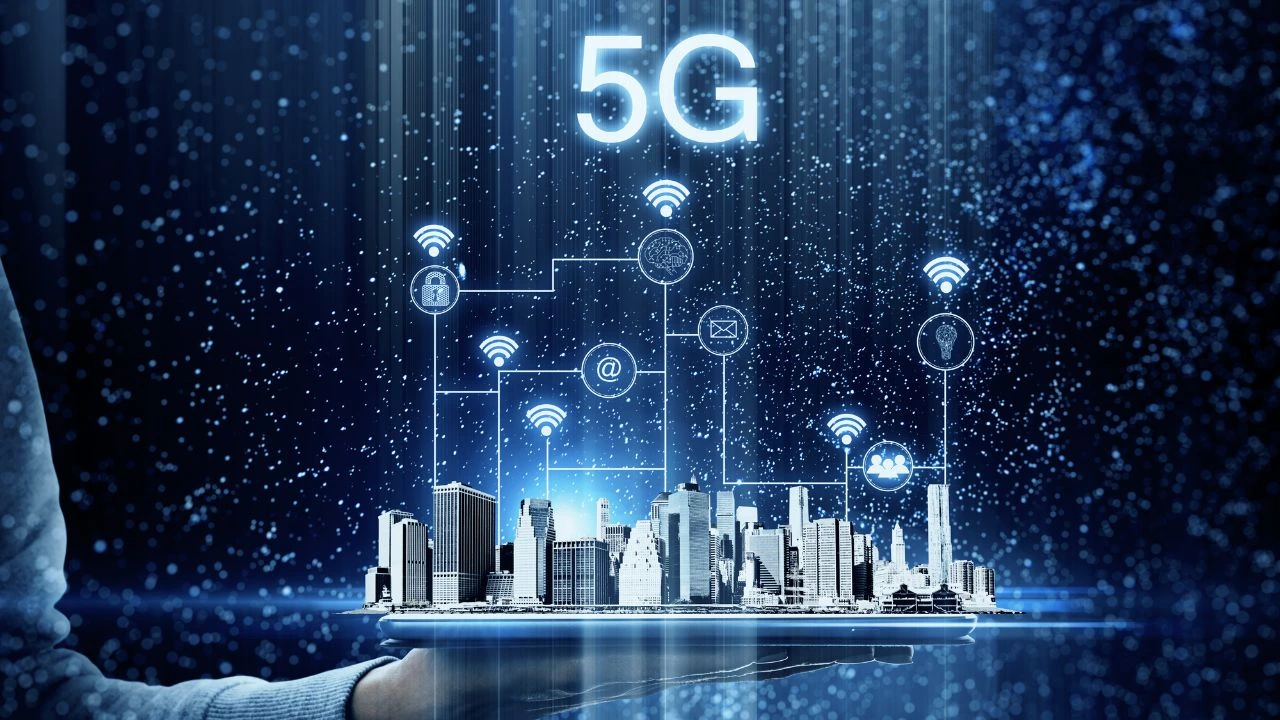The rollout of 5G technology is set to revolutionize many industries, and digital marketing is no exception. With its promise of faster speeds, lower latency, and improved connectivity, 5G opens the door to innovative marketing strategies that can enhance customer experiences and engagement. In this blog, we’ll explore how 5G technology will transform digital marketing and what businesses can do to harness its potential.

Understanding 5G Technology
Before diving into its implications for digital marketing, it’s essential to understand what 5G technology is. 5G, or fifth-generation wireless technology, offers significantly faster data download and upload speeds compared to its predecessors (4G LTE). It also provides lower latency, which means a quicker response time between sending and receiving data. This advancement enables more devices to connect to the network simultaneously without sacrificing speed or performance.
1. Enhanced Mobile Experiences
With 5G, marketers can create richer and more interactive mobile experiences. Faster download speeds will allow users to access high-quality video content, AR/VR experiences, and interactive applications without buffering or lag. This capability opens the door for brands to develop more immersive campaigns that capture and retain consumer attention.
For instance, brands can offer high-definition live streaming of events, product launches, or tutorials, allowing customers to engage with the brand in real time. This not only enhances user experience but also fosters a sense of community around the brand.
2. Personalized Content Delivery
5G technology will enable marketers to leverage real-time data analytics more effectively. With the increased speed and reduced latency, businesses can analyze consumer behavior and preferences instantly, allowing for highly personalized content delivery.
For example, retailers can use location-based marketing to send personalized promotions to customers’ smartphones when they are near a store. Additionally, dynamic content can be adjusted based on user behavior, interests, and context, providing a tailored experience that resonates with individual consumers.
3. AR and VR Integration
Augmented Reality (AR) and Virtual Reality (VR) are becoming increasingly popular in digital marketing, and 5G will significantly enhance these technologies. The fast speeds and low latency of 5G will enable seamless integration of AR and VR into marketing campaigns, providing consumers with immersive and interactive experiences.
Imagine trying on clothes virtually using AR before making a purchase or exploring a virtual showroom of a new car model. These engaging experiences can lead to higher conversion rates, as customers feel more confident in their buying decisions.
4. IoT-Driven Marketing
The Internet of Things (IoT) refers to the network of interconnected devices that communicate with each other. With the advent of 5G, the number of connected devices is expected to surge, leading to new opportunities for digital marketing.
Marketers can tap into IoT data to gain insights into consumer behavior and preferences. For example, smart appliances can provide data on usage patterns, allowing brands to create targeted campaigns based on consumer habits. Additionally, smart cities and connected vehicles can facilitate location-based marketing, enabling brands to engage customers in real time.
5. Faster Ad Delivery and Enhanced Targeting
The speed of 5G will improve ad delivery, reducing load times and providing consumers with instant access to ads, videos, and other marketing materials. This enhanced performance can lead to lower bounce rates and increased engagement, as consumers are more likely to interact with content that loads quickly.
Moreover, 5G will enable more sophisticated targeting options. Marketers can leverage real-time data to adjust their campaigns based on audience behavior and preferences, ensuring that the right message reaches the right audience at the right time.
6. Seamless Live Streaming and Events
The ability to deliver high-quality, low-latency live streaming is one of the most exciting prospects of 5G technology. Brands can host live events, product launches, and webinars without the limitations imposed by slower networks. This capability allows for greater interactivity, with viewers able to participate in real time through Q&A sessions, polls, and live chats.
Brands can also utilize live streaming to showcase behind-the-scenes content, building a deeper connection with their audience and creating a sense of authenticity.
7. Improved Analytics and Measurement
With 5G, marketers can access and analyze data in real time, providing insights into campaign performance and customer behavior like never before. This capability enables brands to make data-driven decisions, optimizing their marketing strategies on the fly.
Marketers can track user engagement across multiple channels, understand how consumers interact with content, and measure the effectiveness of campaigns more accurately. This level of insight allows for continuous improvement and refinement of marketing efforts.
Conclusion
5G technology is poised to revolutionize digital marketing by enabling enhanced mobile experiences, personalized content delivery, and seamless integration of emerging technologies like AR and VR. As businesses adapt to this new landscape, those that leverage the capabilities of 5G will be better positioned to engage consumers, enhance brand loyalty, and drive sales.


No responses yet